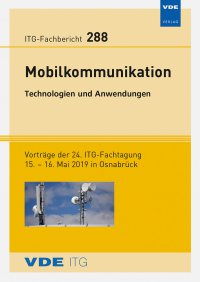Physical Layer Security for IIoT and CPPS: A Cellular-Network Security Approach
Konferenz: Mobilkommunikation – Technologien und Anwendungen - 24. ITG-Fachtagung
15.05.2019 - 16.05.2019 in Osnabrück, Deutschland
Tagungsband: Mobilkommunikation – Technologien und Anwendungen
Seiten: 5Sprache: EnglischTyp: PDF
Persönliche VDE-Mitglieder erhalten auf diesen Artikel 10% Rabatt
Autoren:
Lipps, Christoph; Strufe, Mathias; Mallikarjun, Sachinkumar Bavikatti (Intelligent Networks Research Group, German Research Center for Artificial Intelligence, 67663 Kaiserslautern, Germany)
Schotten, Hans D. (Intelligent Networks Research Group, German Research Center for Artificial Intelligence, 67663 Kaiserslautern, Germany & Institute for Wireless Communication and Navigation, University of Kaiserslautern, 67663 Kaiserslautern, Germany)
Inhalt:
The industrial landscape is currently in a state of upheaval. The changes and actual developments within Cyber-Physical Production Systems (CPPSs), the Industrial Internet of Things (IIoT) and the Industrial Automation and Control Systems (IACSs) burst the traditional communication links. There are a multitude of sensors and actuators which must be integrated into the networks, as well as new application scenarios such as Machine-to-Machine (M2M) or Machine-to-Service (M2S) com- munication that should be considered. The driving forces of this development are firstly the mobility and flexibility of the interconnected devices and secondly the ability to influence the network management, for instance with Software-Defined Network (SDN). Nevertheless, the application of wireless solutions implies great risks, new attack vectors and cyber-security threats. Due to the open nature and the broadcast characteristic of those, there is a huge potential for miscellaneous cyber-attacks. To face this, new methods have to be developed, in order to meet the requirements of industry such as reliable communication and low cost as well as low latency. Within this work, we want to propose an approach for Secret Key Generation (SKG) in wireless networks.We focus especially on the transfer of the Physical Layer Security (PhySec) concept to Next Generation Mobile Network (NGMN) such as Long Term Evolution Advanced (LTE+) or the upcoming Fifth Generation (5G). In this work a LTE testbed is described to evaluate the appropriateness of cellular Channel-Physically Unclonable Functions (PUFs) to secure future industrial wireless networks. Besides that, first results are presented and compared with results of WLAN-PhySec.


